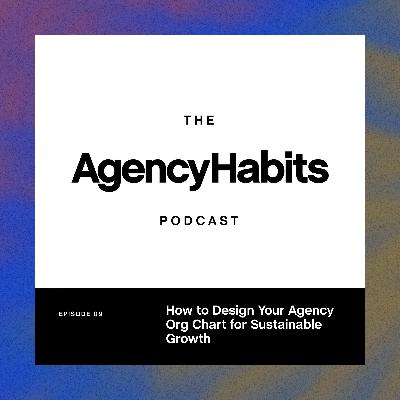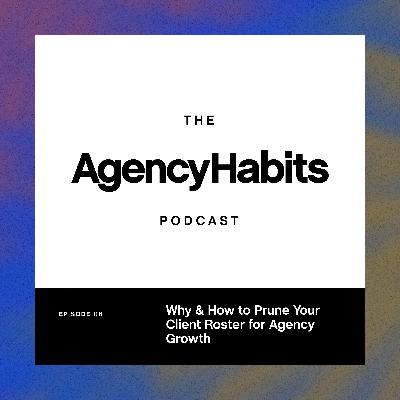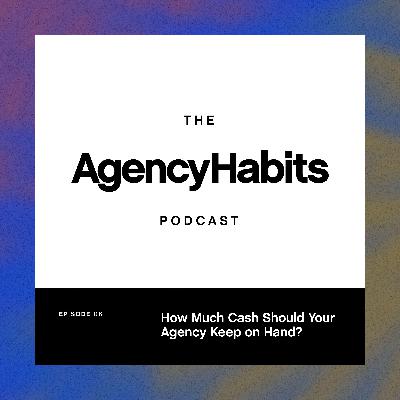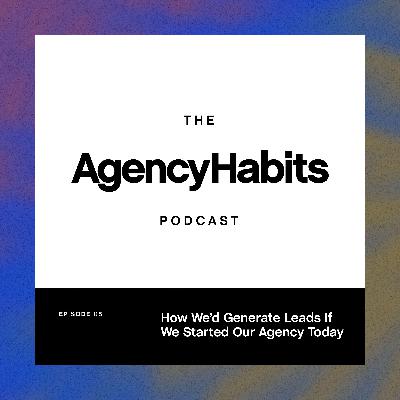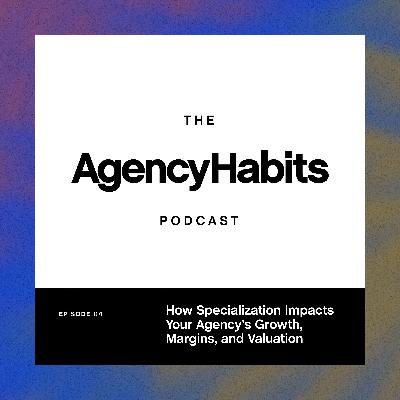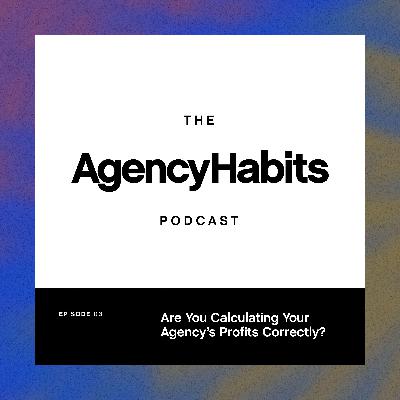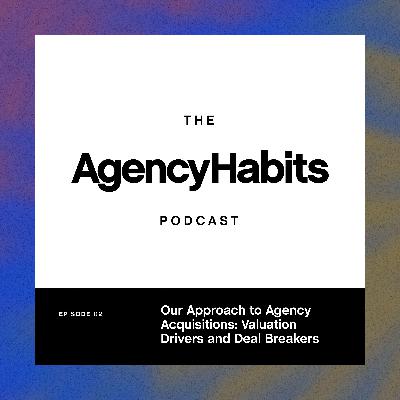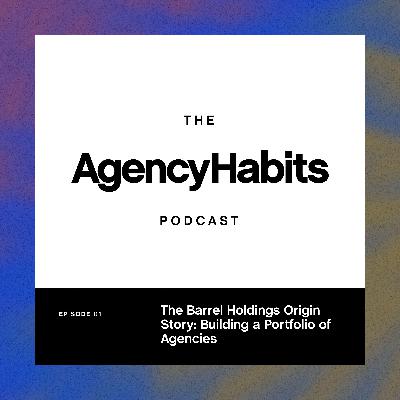How to Design Your Agency Org Chart for Sustainable Growth
Description
In this episode, hosts Peter Kang and Sei-Wook Kim pull back the curtain on one of the most critical yet often overlooked aspects of scaling an agency: organizational design. Starting from their own early days as a flat, "all-hands-on-deck" team, they trace the evolution of their org chart at Barrel as they grew, specialized roles, and built departments.
Peter and Sei-Wook discuss the telltale signs that it's time to add structure, from the need for career paths and mentorship to managing increasing project complexity. They share practical advice on how founders can be more deliberate about org design, including the powerful exercise of visualizing your current and future org chart.
They also get real about the challenges of scaling up and down, the pitfalls of over-specializing too early, and how to define leadership roles that match your agency's current stage of growth. Whether you're a solo founder feeling the strain or a growing team struggling with blurred lines, this episode offers a clear framework for building an intentional and effective organizational structure.
Key Moments
1. The early days: Why flat orgs work (until they don't).
2. The catalyst for change: Needing career paths, mentorship, and clear leadership.
3. How project complexity forces specialization and new roles (PMs, QA, Strategists).
4. The pitfall of over-specializing and bloating project teams without budget support.
5. The danger of "orphaned" roles that report directly to founders.
6. Step 1: Understanding your own strengths and weaknesses as a founder.
7. Step 2: The power of visualizing your org chart to identify gaps and stragglers.
8. Step 3: Using the org chart as a strategic tool for future hiring and growth.
9. The hard reality: Scaling your org down in times of revenue decline.
10. Defining leadership roles: "Player-Coach" vs. "General Manager" at different stages.
Real Talk Takeaways
1. Your org chart is a strategic tool, not an HR formality. Visualizing it is the first step to intentional growth.
2. Not all specialization is good. Adding roles increases overhead; it must be supported by project budgets and volume.
3. Founders must learn to let go. The goal is to move from being a "player" to a "GM" who focuses on org design and hiring.
4. Business isn't always up and to the right. You must be willing to dismantle roles you worked hard to build when revenue contracts.
5. Hire leaders for the stage you're in. A "Director" at a 20-person agency needs to be hands-on, not just managerial.
6. Clarity is kindness. Clear role definitions, career progressions, and reporting lines build trust and accountability.
7. The ultimate leverage for a founder is designing an org where the right people are in the right seats.
Timestamps
00:00 – Welcome to Agency Habits
00:06 – Why org design is a recurring pain point for scaling agencies
00:39 – The early days: Fluid roles, flat structures, and everyone wearing multiple hats
01:33 – The turning point: Needing structure for career growth and mentorship
02:10 – How project complexity (bigger teams, more disciplines) forces org evolution
03:43 – The transition: Creating departments, defining roles, and establishing leadership
05:48 – The double-edged sword of specialization: Efficiency vs. overhead & silos
07:24 – The critical link between project budgets, team size, and agency margins
08:11 – The problem of "orphaned" roles that lack a clear reporting line
09:00 – Advice for founders: How to start being deliberate about org design
10:00 – Step 1: Map your current org chart to visualize reporting lines and gaps
11:00 – Step 2: Create a future org chart to plan hires and growth deliberately
12:22 – Integrating org design with performance management and career progression
13:29 – How org design gave the founders the confidence to exit day-to-day operations
14:17 – The hardest part: Letting go, trusting your team, and allowing them to learn
14:46 – The founder's evolution: From "player" to "General Manager"
16:05 – The reality check: Scaling your org down during stagnant or declining revenue
17:04 – The sunken cost fallacy: Why you can't cling to overhead roles in a downturn
19:22 – Strategies for contracting: Transparency, fractional roles, and re-consolidating hats
20:13 – Defining leadership: "Player-Coach" vs. "General Manager" at different scales
22:47 – How to think about a leader's utilization and their impact on the entire team
23:19 – Wrap-up: The importance of intentional org design
Notable Quotes
"The org chart was very flat... it became unclear who reports to whom, what everyone's responsibility is."
"Effective org design needs to also reflect the type of work that you do and the way that your project or engagement teams are constructed."
"Once we started using the org chart as a tool, it was really helpful... we started having discussions around job descriptions, who reports to who, and how we measure success."
"The first thing for a founder is understanding your own strengths and weaknesses."
"As the founder, the leader, you're really trying to get to a point where your main lever of impact is the org design and then recruiting the right people and holding them accountable to results."
"Business isn't always up and to the right... you may need to make changes in the business that are kinda the opposite of what you put in place."
"You almost have to kind of see the warning signs, make the decisive move to slim it down... you can't cling to the facade of the infrastructure you built."
"It's always a balance, but just understanding... how are they using their time and what's the best use of their energy."
Links & Resources
Peter Kang on LinkedIn: https://www.linkedin.com/in/peterkang34/
Sei-Wook on LinkedIn: https://www.linkedin.com/in/seiwookkim/
AgencyHabits Website: https://www.agencyhabits.com/
AgencyHabits on LinkedIn: https://www.linkedin.com/company/agencyhabits/
Barrel Holdings Website: https://www.barrel-holdings.com/
Barrel Holdings LinkedIn: https://www.linkedin.com/company/barrel-holdings/

